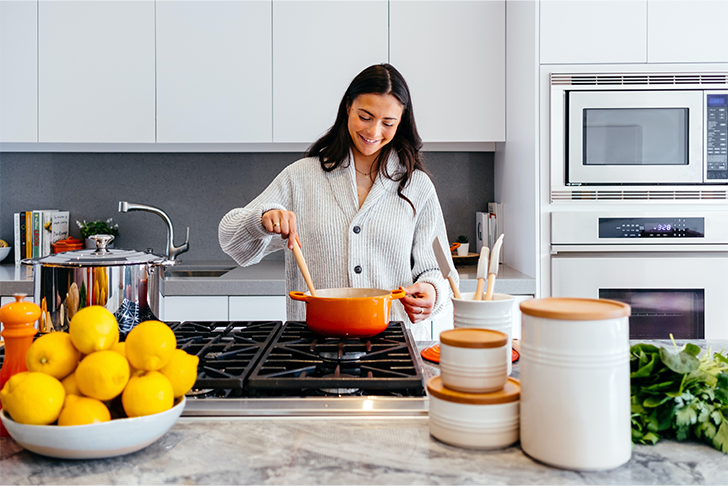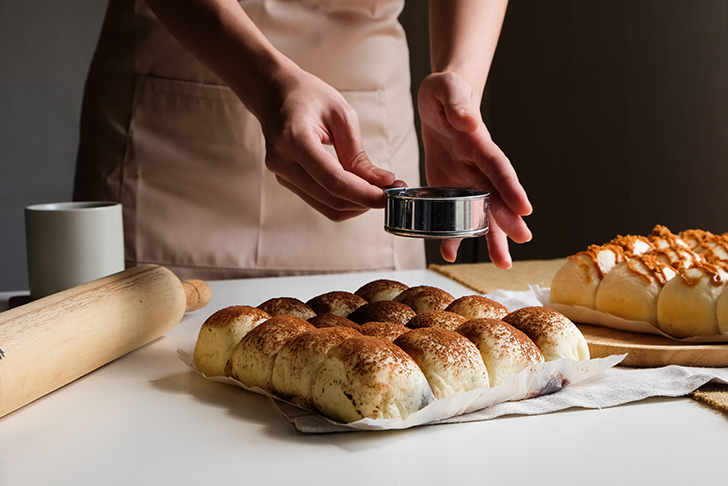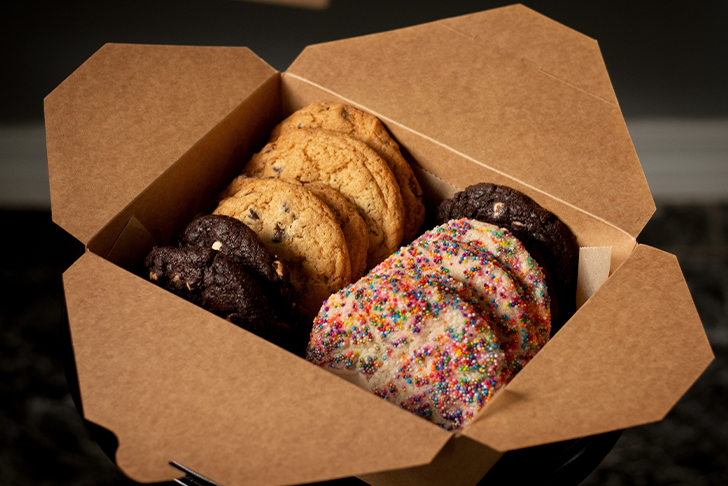Working from home shouldn’t only be a perk for people who work from their laptops.
If you have a passion for food and dream of starting your own home cooking business, the time is now. All you need is a suitable kitchen, delicious recipes and an internet connection so that your customers can find you!
Does selling homemade food in Australia sound too good to be true? It’s not.
In this article, you’ll learn:
- If starting a food business from home is profitable.
- Whether a home-based business is right for you.
- The costs involved in starting this business.
- How to start a food business in Australia.
Let’s dive in.
Is starting a food business from home profitable?

Thanks to the growth of food delivery apps, starting a food business from home has become even more profitable than it was previously.
The Australian Bureau of Statistics reported that in a single year (Jan 2020 - Jan 2021), online food sales almost doubled from $515 million to $908 million. The trend is set to continue with meal delivery revenue expected to fall just shy of $3 billion this year.
But how much can you make from a home-based food business?
Because home-based food businesses are often run part-time, providing concrete estimates is difficult. It depends on your commitment to marketing and the demand from your local community.
However, to give you a rough idea: If you were to start a meal delivery business where you charged $10 per meal and delivered 100 meals per week, you’d generate $1,000 or $52,000 per year in revenue.
Keep in mind that this is before costs so profit will only be a fraction of this number.
So yes, starting a food business from home is profitable, but will a recession change that?
It certainly could, but home-based food businesses do have some advantages that shield them from these environments which we’ll cover next.
Find out more: Need funding? Check out our guide on small business grants.
Why should you start a food business from home?

Starting a food business from home has advantages over traditional restaurants (some of which are beneficial during recessions), namely:
- Low fixed costs due to not having a commercial premise or serving staff.
- The ability to reduce prices due to having larger margins than commercial small food businesses.
- Being able to reduce operating capacity without worrying about overhead costs.
- Flexible operating hours because you don’t have a storefront.
But there are also some risks you should consider, such as:
- Confusion regarding which legal acts to abide by as this varies depending on what you sell and where you sell it.
- Limited room to scale depending on the size of your home commercial kitchen.
- Food safety risks due to cross-contamination between home and business items.
- Difficulty separating work life from home life as you’re constantly at home.
Besides deciding based on the opportunity’s pros and cons, you should also consider if you have the right personality and skills for this endeavour.
A home-based food entrepreneur should have a passion for food and a love for experimentation that’ll help them craft delicious recipes. They also need strong organisational skills as it can be difficult to manage a business and household in the same area. Finally, they’ll need a strong work ethic to get the business off the ground and make a profit.
Start-up costs and funding opportunities

Home-based food businesses are one of the most budget-friendly opportunities you could pursue since you’ll have most of what you need already.
For example, you’ll likely have an oven, stove, pots, pans, and other cooking equipment. So you’d likely only need to pay for ingredients, insurance and marketing which could cost as low as $500 - $1,000.
However, if your kitchen is in need of a remodel, you’d need between $10,000 to $40,000 depending on how much you want to be done.
One more thing to consider is whether you’ll deliver the food yourself. If so, this could add anywhere between $5,000 to $40,000+ to how much funding you need.
To recap, you’ll need roughly:
- $1,000 if you have the necessary equipment already.
- $10,000 to $40,000 if you need kitchen remodelling.
- $15,000 to $80,000 if you need everything mentioned above.
Now, if you think you might be on the high end of these numbers, it’s a good idea to read our small business grants guide which covers popular grants in Australia.
Alternatively, you can read our guide on small business loans, if you’d prefer a more traditional funding option.
How do you start a food business from home?
Starting a food business from home requires that you follow a few steps, namely:
- Creating a business plan.
- Learning and abiding by the laws and regulations of your industry.
- Registering your business and applying for a tax number.
- Developing processes for food safety.
Let’s dive into them further.
Create your business plan
Having a business plan is vital whether you open a restaurant or a home-based food business because it’s an overview of every important part of your company.
Here are some questions to answer in the plan:
1. Who is your target market?
Targeting anyone and everyone is a recipe for failure in business because you want your marketing and food to resonate deeply with your buyers. This leads to repeat orders and long-term customers.
Examples of target niches include keto dieters, vegans, busy parents, etc.
2. What is your USP?
You need to develop a unique selling point that your business is known for as it helps you stand out from your competitors.
For example, at one point, pizza giant Domino’s USP was “Fresh, hot pizza delivered in 30 minutes or less, guaranteed.”
Yours could revolve around the ingredients you use, how the food is prepared or any other aspect that makes your food unique.
3. How will you sell your food?
There are many ways to sell your homemade food. You can:
- Use social media.
- Create a website.
- Register for online delivery apps.
- Attend a local market.
You can also use a combination of these options to diversify your traffic.
4. Will you deliver the food?
If you offer food deliveries, you need to figure out the logistics behind it. This could mean relying on a third-party app, doing the deliveries yourself or even hiring an in-house driver to take care of it.
5. Do you want to scale in the future?
This may be difficult to answer in the beginning. But if you know you want to build a large business, make sure to include the steps you’ll take to get there.
These could include applying for more funding or upgrading to a commercial facility when you reach a certain level of demand.
What are the primary laws and regulations you need to know to start a food business from home?
Although home-based food businesses don’t require a food license, they’re still subject to certain business regulations in Australia.
The main standards you must abide by are:
- Standard 3.2.2 - Food Safety Practices and General Requirements
- Standard 3.2.3 Food Premises and Equipment
- Part 1.2 - Labelling and Other Information Requirements
Keep in mind that a food safety officer from your local council will need to inspect your home before you begin operating. You’ll also need to notify them whenever your business name, its location or its food offerings change.
How do you set up a food business from home?
First, you need to register your food business and apply for business and tax numbers. The process is simple, free and can be done online.
You’ll also need to notify your local council so that they can conduct a food safety evaluation.
Some factors they consider include:
- Whether your premises is suitable for food safety and contamination prevention while cooking at home.
- The quality of your vehicle and kitchen equipment.
- Preparation and storage processes.
- Food and ingredient traceability in the event of bacterial outbreaks.
Bear in mind that if you need to make any major changes to your home to pass the evaluation, you need to get permission for your landlord first.
When it comes to your evaluation, the council will be particularly concerned about your food hygiene and how you handle food allergies. This is because unhygienic food and allergic reactions can cause serious illnesses which in turn ruin your business’s reputation.
That’s why you should take relevant courses to understand these issues and prevent them from happening.
Here are two we recommend:
In general, though, here are some tips for food safety:
- Ensure your storage and preparation areas are clean and free of pests.
- Store raw meats away from any ingredients or pre-made meals that won’t be thoroughly cooked again.
- Always store your food at the correct temperatures and regularly check how your refrigerator is performing.
- Use older ingredients first (as long as they’re still fresh).
If you plan to deliver food yourself, you’ll also need to:
- Ensure you keep the food at the correct temperatures during delivery.
- Keep food segregated from any potential contaminants in your vehicle.
- Use reliable packaging to prevent spills.
Outside of food safety, you’ll also need to conduct a physical risk assessment of your working area. This includes reducing the number of potential hazards around your kitchen as well as creating an action plan for when they do happen.
This includes dealing with fires, potentially dangerous equipment and substances, excessive noise and having the right first-aid equipment for any injuries.
How to advertise your home food business

With a home-based food business, you don’t typically have a storefront so you’ll need to rely on marketing to spread the word about your endeavour.
First, though, you need to design an eye-catching logo and packaging to match.
Consider who your target market is and tailor your designs to their preferences. For a home bakery, this could be a rustic logo coupled with nicely folded brown paper packaging if you're selling bread.
Next, you’ll need to figure out where you’re going to sell your food.
If you plan to sell it at a farmer’s market, for example, then you’ll at least need a website so people can find you online. But if you plan to sell food from home through online deliveries, registering with a delivery app, such as Uber Eats or Deliveroo, can help you gain exposure for your food.
Once your sales channels are set up, it’s time to start driving traffic and an excellent way to do this when selling food online is with social media.
In particular, TikTok and Instagram are great options as they focus on visual content like images and videos which are perfect for advertising food. You can also try selling food on Facebook in Australia as they’re starting to increase the reach of their own reels feature.
Once you’ve got a profile set up, consider running paid ads to your content if you want to build your audience faster.
Finally, make sure to share positive reviews on social media, your website, or anywhere customers can find you. The more positive reviews you have, the more likely it is that new customers will try your food!
Find out more: Need more advice on this sector? Read our sector-specific articles.
Other Routes Into Business Ownership
Selling food from home isn’t the only path to success.
In fact, buying an existing food or catering business could be a safer route because you already have a proven playbook to follow. On top of this, you’ll likely have an existing customer base so you’ll be generating revenue from day one.
If that sounds good to you, check out our business buying guide to learn more about navigating the process.
But if building from ground zero is for you, here’s a quick recap on How to Start a Food Business From Home:
- Determine whether your chosen food business is profitable and whether it’s the right move for you.
- Calculate your startup costs and plan how to fund your business.
- Develop your business plan which includes clarifying your target market and more.
- Understand the relevant laws and regulations that you must abide by with your food business. Consider taking courses to ensure you have this knowledge.
- Ensure your home kitchen is suitable for preparing and storing food.
- Get the word out about your business with marketing.
Whether you start your business from scratch or buy an existing one, we wish you luck and hope you give it your all!
But if you need a helping hand during the process, don’t hesitate to contact us and we’ll do everything we can to help.
